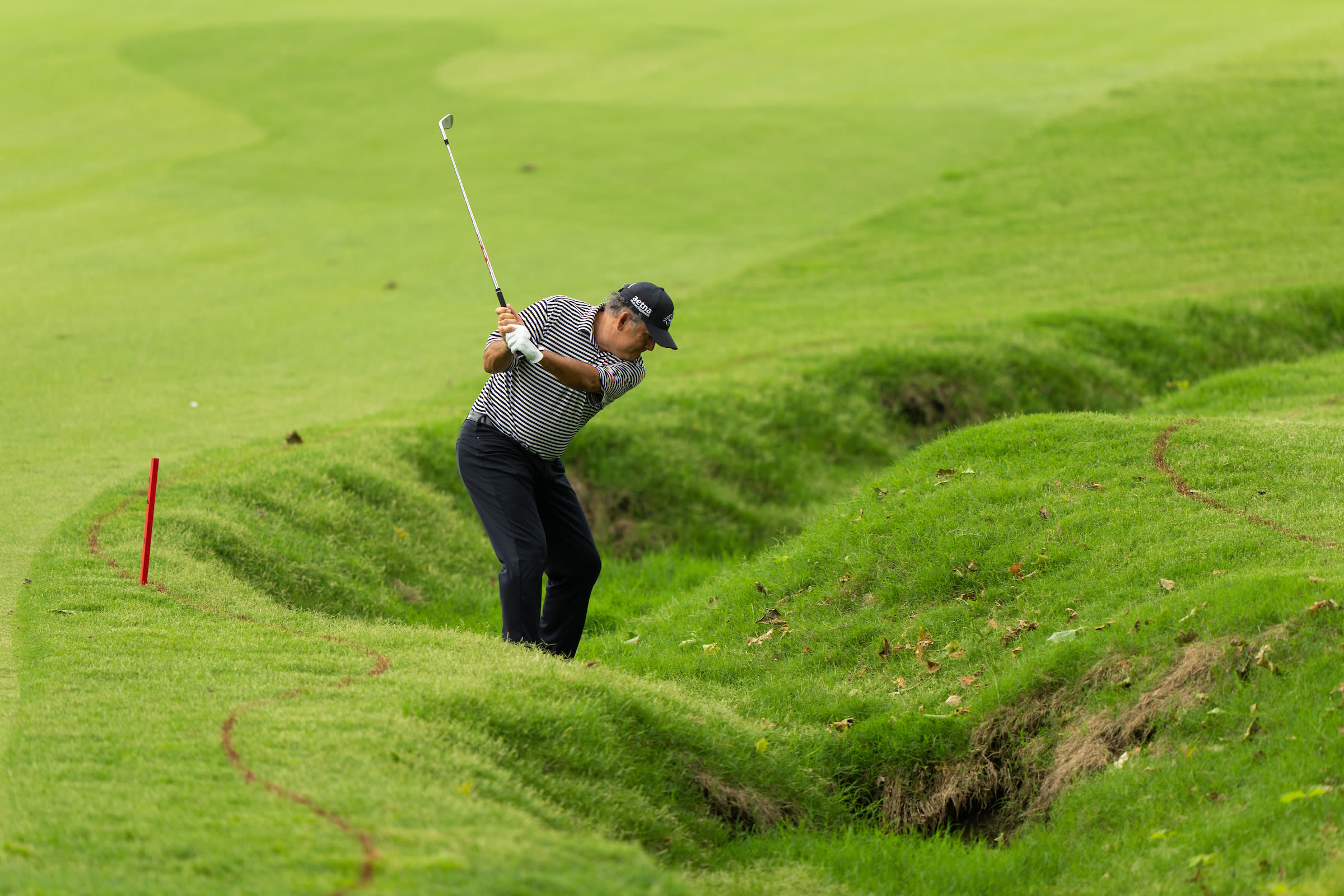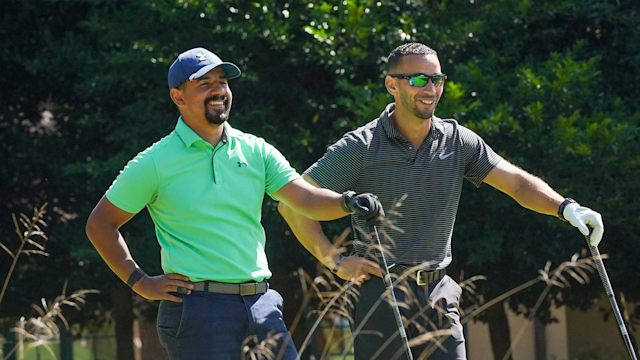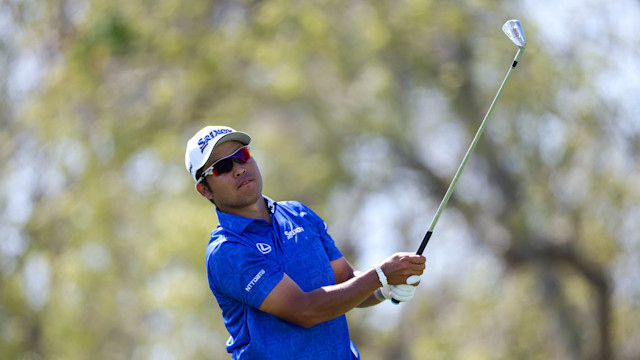quick coaching
How to Take Relief From Hazards, Out of Bounds and Lost Balls
Published on

Let's take a deeper look into two more important aspects of the the rule book. The USGA Rules of the Week are Rule 17 and Rule 18, concerning relief from penalty areas and how to proceed when you hit your ball out of bounds or lose your ball.
Rule 17
Penalty areas are defined as either red or yellow. You may stand in a penalty area to play a ball outside the penalty area, including after taking relief from the penalty area.
A. When Your Ball Is in Penalty Area: Your ball is in a penalty area when any part of it lies on or touches the ground or anything else inside the edge of the penalty area, or is above the edge or any other part of the penalty area.
B. You May Play Ball as It Lies in Penalty Area or Take Penalty Relief: You may either play the ball as it lies without penalty or play a ball from outside the penalty area by taking penalty relief.
**Exception – Relief Must Be Taken from Interference by No Play Zone in Penalty Area.
C. Relief for Your Ball Not Found but in Penalty Area: If your ball has not been found and it is known or virtually certain that it came to rest in a penalty area you may take penalty relief under this Rule. If it is not known or virtually certain that your ball came to rest in a penalty area and the ball is lost, you must take stroke-and-distance relief.
D. Relief for Your Ball in Penalty Area: You have the relief options shown in Diagram #1 17.1d (relief for yellow penalty area) and Diagram #2 17.1d (relief for red penalty area), each for one penalty stroke.
Rule 18
18.1 Relief Under Penalty of Stroke and Distance Allowed at Any Time: At any time, a player may take stroke-and-distance relief by adding one penalty stroke and playing the original ball or another ball from where the previous stroke was made (see Rule 14.6).
The player always has this stroke-and-distance relief option no matter where the player’s ball is on the course, and even when a Rule requires the player to take relief in a certain way or to play a ball from a certain place.
Once the player puts another ball in play under penalty of stroke and distance (see Rule 14.4). The original ball is no longer in play and must not be played. This is true even if the original ball is then found on the course before the end of the three-minute search time (see Rule 6.3b).
But this does not apply to a ball to be played from where the previous stroke was made when the player announces that he or she is playing a provisional ball (see Rule 18.3b), or is playing a second ball in stroke play under Rule 14.7b or 20.1c(3).
18.2 Ball Lost or Out of Bounds: Stroke-and-Distance Relief Must Be Taken
A. When Ball Is Lost or Out of Bounds(1) When a ball is Iost: A ball is lost if not found in three minutes after the player or his or her caddie begins to search for it. If a ball is found in that time but it is uncertain whether it is the player’s ball: The player must promptly attempt to identify the ball (see Rule 7.2) and is allowed a reasonable time to do so, even if that happens after the three-minute search time has ended. This includes a reasonable time to get to the ball if the player is not where the ball is found. If the player does not identify his or her ball in that reasonable time, the ball is lost.
(2) When Ball Is Out of Bounds. A ball at rest is out of bounds only when all of it is outside the boundary edge of the course. A ball is in bounds when any part of the ball: Lies on or touches the ground or anything else (such as any natural or artificial object) inside the boundary edge, or Is above the boundary edge or any other part of the course. A player may stand out of bounds to play a ball on the course.
B. What to Do When Ball Is Lost or Out of Bounds: If a ball is lost or out of bounds, the player must take stroke-and-distance relief by adding one penalty stroke and playing the original ball or another ball from where the previous stroke was made (see Rule 14.6).
**Exception – Player May Substitute Another Ball Under Other Rule When It Is Known or Virtually Certain What Happened to Ball: Instead of taking stroke-and-distance relief, the player may substitute another ball as allowed under a Rule that applies when his or her ball has not been found and it is known or virtually certain that the ball: Came to rest on the course and was moved by an outside influence (see Rule 9.6) or played as a wrong ball by another player (see Rule 6.3c(2)), Came to rest on the course in or on a movable obstruction (see Rule 15.2b) or an abnormal course condition (see Rule 16.1e), Is in a penalty area (see Rule 17.1c), or Was deliberately deflected or stopped by any person (see Rule 11.2c).
18.3 Provisional Ball
A. When Provisional Ball Is Allowed: If a ball might be lost outside a penalty area or be out of bounds, to save time the player may play another ball provisionally under penalty of stroke and distance (see Rule 14.6). For a ball that might be lost, this applies: When the original ball has not been found and identified and is not yet lost, and when a ball might be lost in a penalty area but also might be lost somewhere else on the course. But if the player is aware that the only possible place the original ball could be lost is in a penalty area, a provisional ball is not allowed and a ball played from where the previous stroke was made becomes the player’s ball in play under penalty of stroke and distance (see Rule 18.1).
If a provisional ball itself might be lost outside a penalty area or be out of bounds: The player may play another provisional ball. That provisional ball then has the same relationship to the first provisional ball as the first one has to the original ball.
B. Announcing Play of Provisional Ball: Before the stroke is made, the player must announce that he or she is going to play a provisional ball: It is not enough for the player only to say that he or she is playing another ball or is playing again. The player must use the word “provisional” or otherwise clearly indicate that he or she is playing the ball provisionally under Rule 18.3. If the player does not announce this (even if he or she intended to play a provisional ball) and plays a ball from where the previous stroke was made, that ball is the player’s ball in play under penalty of stroke and distance (see Rule 18.1).
C. Playing Provisional Ball Until It Becomes the Ball in Play or Is Abandoned(1): Playing Provisional Ball More Than Once. The player may continue to play the provisional ball without it losing its status as a provisional ball so long as it is played from a spot that is the same distance or farther from the hole than where the original ball is estimated to be. This is true even if the provisional ball is played several times. But it stops being a provisional ball when it becomes the ball in play under (2) or is abandoned under (3) and therefore becomes a wrong ball.
(2) When Provisional Ball Becomes Ball in Play. The provisional ball becomes the player’s ball in play under penalty of stroke and distance in either of these two cases: When Original Ball Is Lost Anywhere on Course Except in Penalty Area or Is Out of Bounds. The original ball is no longer in play (even if it is then found on the course after the end of the three-minute search time) and is now a wrong ball that must not be played (see Rule 6.3c). When Provisional Ball Is Played from Spot Nearer Hole Than Where Original Ball Is Estimated to Be. The original ball is no longer in play (even if it is then found on the course before the end of the three-minute search time or is found nearer the hole than had been estimated) and is now a wrong ball that must not be played (see Rule 6.3c). If the player plays a provisional ball into the same general location as the original ball and is unable to identify which ball is which: If only one of the balls is found on the course, that ball is treated as the provisional ball which is now in play. If both balls are found on the course, the player must choose one of the balls to be treated as the provisional ball which is now in play, and the other ball is treated as lost and must not be played.
** Ruling Verbiage and Graphics taken from USGA Rules and Interpretations **



